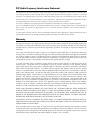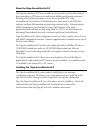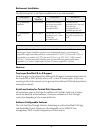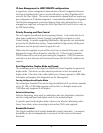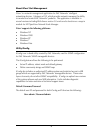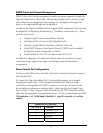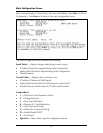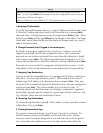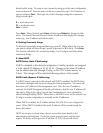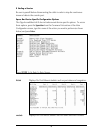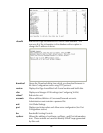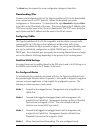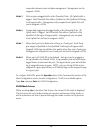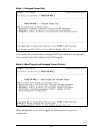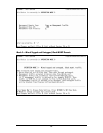
7
NOTE
Reboot after making any modifications to the Saved Values or the changes will not take
effect. To reboot, type
Reboot
at the prompt on the main configuration screen, or turn the
chassis power OFF, then ON again.
Because a Delete key is not available on VT-100 terminal emulators, use the F2 key instead.
I
Assigning IP Information
To modify the Saved Parameter Values (i.e., assign IP address and subnet mask), press
I
. Enter the IP address and subnet mask for the connected device, pressing
Enter
after each value. A default gateway can also be assigned (press
Enter
to skip). When
finished, press
Enter
and then type
Reboot
for the changes to take effect. The Saved
Values and Current Values should now both display the changes made (e.g., new IP
address and subnet mask).
P
Change Password (only if logged in via console port)
By default, no password is assigned via the console port. However, one can be
assigned by pressing
P
from the main configuration screen. Enter a password;
passwords are case sensitive and should be no more than eight characters in length,
with no spaces; press
Enter
. This will be requested whenever logging on or off. To
remove password protection, select
P
and instead of entering a password press
Enter
.
Passwords are a way to make the management of network devices secure. It is the
responsibility of the network administrator to store and maintain the password lists.
T
Assigning Trap Destinations
Traps are sent by the manageable device to a management PC when a certain event
takes place. To enter a trap destination, press
T
. When asked to Enter a New IP
Address, type the IP address of the destination device and press
Enter
. Then, type
the name of the community string (that the destination device has been configured to
accept) and press
Enter
. This function enables ALL of the device’s traps. To
selectively activate and de-activate traps, use iConfig for configuration. Supported
traps include enterprise-specific and generic; generic traps include: Link Down, Link
Up, Cold Start, Warm Start and Authentication Failure.
K
Removing Trap Destinations
To remove all trap destinations, press
K
. When asked to confirm, press
Y
to continue
or
N
to abort. Then, press
Enter
.
C
Creating Community Strings
The purpose of community strings is to add a level of security to a network. The
default community string is named public and has read/write access. Add the
necessary custom community strings such as one with read-only access (for general
use), and another with read/write access (for the administrator), then delete the



